Lily Silver's Blog, page 4
June 15, 2015
Paris in the Spring part 3: Party all night at the Moulin Rouge!
Everybody likes a party! Dancing girls on stage, wine and other drinks flowing freely, and lively music.
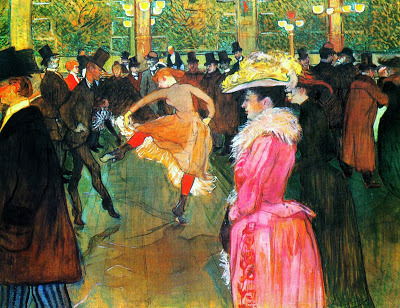 Henri Toulouse Lautrec
Henri Toulouse LautrecIn Montmartre, a village above Paris, there were plenty of nightclubs in 1889. The men flocked to them, some wealthy, some less prosperous. There was a reason for this dedicated patronage: Show Girls! Yeah, sort of like Las Vegas, but without the electricity everywhere.
There were several of these popular clubs in the area. Amid the Absinthe drinking crowds, there was an appreciation for the leggy dancers who whirled onstage in red skirts and lifted their legs to reveal the black stockings beneath those skirts. This may seem tame by today's standards, but in Victorian society, where fashions kept women laced up tight from ankle to neck, believe me when I say the men were titillated to see a little bit of thigh! And, as a grand finale, sometimes the girls would line up and bend over to lift their skirts, revealing their scantily clad bottoms. Yeah, it was heaven for a man in that time period.
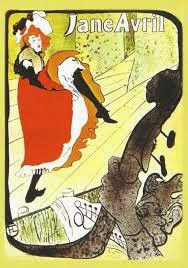 Poster by Toulouse LautrecThe Moulin Rouge was the place to be. It opened in October of 1889, and became the most famous dance club of the time. Amid the glittering lights, as the club was illuminated by both gaslights and electric, there were many sights to see. It was sort of like a circus atmosphere, with various stages holding amusements for the crowds. And there were crowds, upwards of 2,000 a night.
Poster by Toulouse LautrecThe Moulin Rouge was the place to be. It opened in October of 1889, and became the most famous dance club of the time. Amid the glittering lights, as the club was illuminated by both gaslights and electric, there were many sights to see. It was sort of like a circus atmosphere, with various stages holding amusements for the crowds. And there were crowds, upwards of 2,000 a night.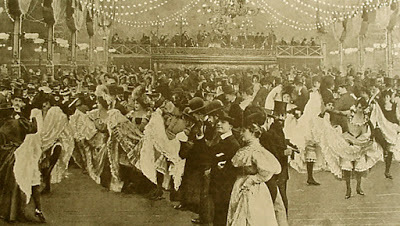 Moulin Rouge 1898
Moulin Rouge 1898The Moulin Rouge had a sensual appeal, with walls painted red, and showgirls making appearances on stage to lift their skirts for the patrons, who were at eye level with the stage. Dancing girls, kind of like Las Vegas without the lights and machines. There were magicians, vaudeville acts, and singing women dressed in pink tights. And beneath the glittering lights excitement and sensuality ruled the evening. Tables were laden with beverages such as Cherry Brandy, Champagne and Absinthe, and lively music was played by musicians. Think of jaunty piano music, loud crowds, heavy drinking, and nearly nude women, and you get the picture.
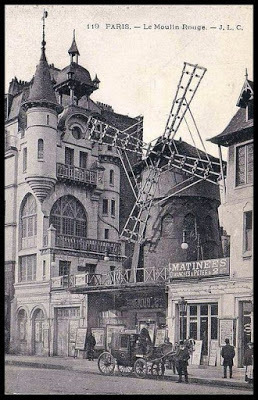
The back of the Moulin Rouge, in the garden, was a place for secret assignations and stolen kisses. The garden had a large stucco Elephant that had been rescued from one of the world's fair exhibits. It was hollow inside. Patrons could go up the winding stairs to the belly of the beast to admire female belly dancers who performed to a 'gentleman only' audience.
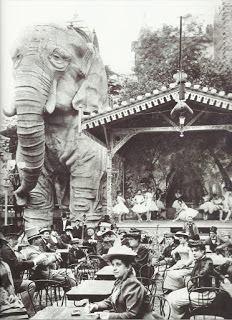
Add to the allure, the bare breasted women riding donkeys in the garden, the illuminated fountains, a stage with someone singing, and you get the picture, it was a gentleman's paradise.
The Moulin Galette was a competitor. They had been established years earlier in Montmartre. Moulin, by the way, means mill. The area boasted many windmills in the 19th century, and a few, such as the Moulin Galette and the Moulin Rouge, were converted into Dance Halls.
The Moulin Galette was a popular place as well. It was on the outskirts of Montmartre, and had an open garden area where people could dance, sip wine and hang out away from prying eyes of society. Renoir painted this alluring place. You've probably seen this painting before.
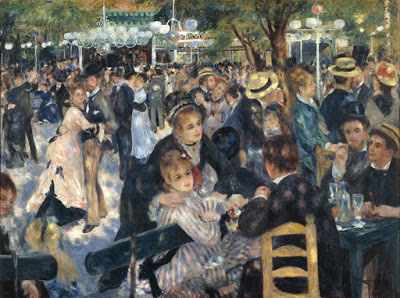 Bal du Moulin de la Galette by Pierre-Auguste Renoir
Bal du Moulin de la Galette by Pierre-Auguste RenoirThis is the back garden, where people could meet over drinks and enjoy the summer nights. Note the balls hanging above the dancers. Those were electric lights. So, this is still 'Victorian' society, but as you can see, the French were less rigid than the English at this time. You'll note women lounging and drinking with men in this scene, enjoying the evening air.
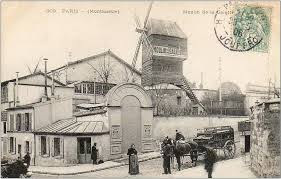 The Moulin GaletteHere from the outside, a street view. Van Gogh was a frequent visitor here, as were other artists such as Renoir, Toulouse-Lautrec and Gauguin.
The Moulin GaletteHere from the outside, a street view. Van Gogh was a frequent visitor here, as were other artists such as Renoir, Toulouse-Lautrec and Gauguin.The dance clubs or cabarets, were there to make money, to entertain men as serve as a place for wealthy men to meet lower class girls. The biggest draw of all was the women who danced at these places. Men came to see long legs clad in black stockings, and swirling skirts that enticed their every fantasy. At one such club, the Reine Blanche, you could see Nini of the Beautiful Thighs.
The grandeur and the greed is staggering. And yet, if you're like Dan Wilson, a character in Some Enchanted Dream, a man from the future, you'll find these places a veritable paradise. He falls for a dance girl, and a little romance ensues. Being from the future, Dan will be more accepting of her profession than the men of Gisele's own time.
If you would like to see more images, go to my pinterest board to see more of Paris.
Lily's Pinterest Board on Paris in late 19th century
Next time, I'll talk a little about the Paris Expo.
Published on June 15, 2015 19:14
June 4, 2015
Paris in the Spring 2; Absinthe, have you met the Green Fairy?
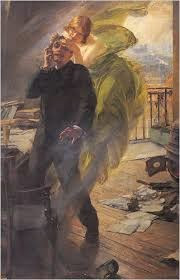
La Fee Verte', or the Green Fairy is associated with Absinthe. In the late nineteenth century, in Paris, artists, poets, musicians and writers were known to chase the Green Fairy to gain inspiration. She was their muse, their goddess, whom they believed imbued man with increased creativity if they drank her special cocktail--Absinthe! Writers, Poets and intellectuals hailed her as the reason for their ability to produce great art and literature. Men drank the potion with a near religious fervor to try to entice the Green Fairy to pay them a visit and give them the talent they sought.
The depiction below shows it diluted with water. Some drank it straight up, resulting in a deep green drink.
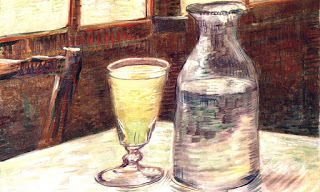 Van Gogh's Glass of Absinthe and Carafe
Van Gogh's Glass of Absinthe and CarafeThe time between five o'clock and seven o'clock in the evening was called the Green Hour, or l'heure verte. It is said that the smell of Absinthe was carried on the early evening air in the Paris boulevards. Sounds exciting to me, to stroll the boulevards in the evening and meet the artists we all adore today, back when they were struggling to gain recognition in the art world. Can you imagine sitting down to a glass of Absinthe with Van Gogh or Toulouse Lautrec!
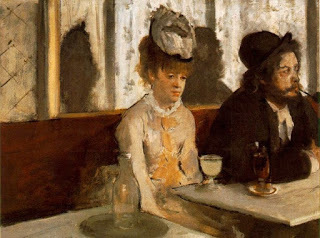 Absinthe Drinkers, by DegasThe Legend of Absinthe:
Absinthe Drinkers, by DegasThe Legend of Absinthe:
 According to the book Absinthe: a Cultural History by Phil Baker, legend says that "Absinthe as it's known today appeared at the end of the 18th century, around 1792. Dr. Pierre Ordinaire was fleeing Paris during French Revolution, and settled in a Swiss village of Couret. He supposedly found it growing wild and cooked up his own recipe for the drink. When he died in 1821, his highly alcoholic concoction was already known as La Fee' Verte, and regarded by locals as a tonic." page 105
According to the book Absinthe: a Cultural History by Phil Baker, legend says that "Absinthe as it's known today appeared at the end of the 18th century, around 1792. Dr. Pierre Ordinaire was fleeing Paris during French Revolution, and settled in a Swiss village of Couret. He supposedly found it growing wild and cooked up his own recipe for the drink. When he died in 1821, his highly alcoholic concoction was already known as La Fee' Verte, and regarded by locals as a tonic." page 105The 'real' story, according to Baker, goes like this: The Henriod sisters were were already making Absinthe before Dr. Ordinaire arrived in the Alps region. A Major Dublied discovered the product, bought the recipe from the sisters Henriod, and started manufacturing it himself. Dublied moved his production company from Switzerland to France to save on import duties. He set up the Absinthe factory in Pontarlier, near the Swiss border. His daughter married a man named Henri-Louis Pernod in 1797, and the Pernod Fils brand of Absinthe was born.
A Writer's Paradise!
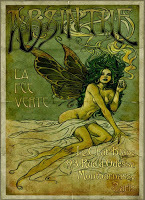 When researching Some Enchanted Dream, I took the legend of how Absinthe was discovered, and the belief in the Green Fairy and ran with it, using it as a plot point. That's what writers like to do, take a legend and create a story around it. In Some Enchanted Dream, the Green Fairy, Artemisia, married a man escaping the French Revolution (fictional person, not Dr. Ordinaire), and gave him the recipe for Absinthe. He then imprisoned her in a garden, and produced the magic drink that inspired artists and poets. He died, leaving her stranded in her garden prison on his estate for several decades. Tara, my heroine, is also of the Fey race. She hears Artemisia reaching out to her in her dreams begging for aid in gaining her freedom.
When researching Some Enchanted Dream, I took the legend of how Absinthe was discovered, and the belief in the Green Fairy and ran with it, using it as a plot point. That's what writers like to do, take a legend and create a story around it. In Some Enchanted Dream, the Green Fairy, Artemisia, married a man escaping the French Revolution (fictional person, not Dr. Ordinaire), and gave him the recipe for Absinthe. He then imprisoned her in a garden, and produced the magic drink that inspired artists and poets. He died, leaving her stranded in her garden prison on his estate for several decades. Tara, my heroine, is also of the Fey race. She hears Artemisia reaching out to her in her dreams begging for aid in gaining her freedom.What's the stuff made of, Really?
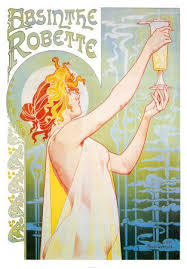
Absinthe is made from an herb, wormwood, also known as Artemisia Absinthium, hence the name Absinthe. The recipe typically is made from steeping various herbs in alcohol overnight--wormwood, anise, fennel and sometimes lemon balm. This mix is further boiled to produce the distillate of alcohol to combine with steam distilled terpenoids from the herbs. For more refinement, more herbs could be added like hyssop and petite absinthe (Artemisia Pontica). Recipes varied, but the main kick was the wormwood steeped in Alcohol. It's not fermented like whiskey or brandy, instead, it's made quickly through steeping and steaming for refinement. Even so, Pernod Absinthe was 60% alcohol, so it was literally 120 proof, twice the strength of whiskey. The idea was to just have one glass in the evening.
It was the drink in Montmartre during the 1880's up through the early 20th century. Later, as the effects of too much wormwood ingestion via Absinthe became known, France and other countries started to restrict it's use and to ban it. Others embraced it as a tonic for melancholy and as a mood enhancer. Either way, it is a mysterious green liquid that can bring on visions and dreams, also known as The Green Eyed Muse. It is described as being the genius of those didn't have any genius, but the death of any real genius for those who did (possess genius).
Some drank it diluted, as I mentioned above, and it became fashionable later to also use an Absinthe spoon and light a cube of sugar aflame over the glass and let it drip into the drink. My husband and I have enjoyed a glass of Absinthe on many occasions with friends or just the two of us. I do admit to feeling a bit of a creative buzz from it. Not drunk, just mind kind of expanded and serene. I see why the famous artists and writers sought the Green Muse!
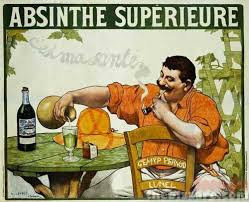
Today, you can buy various brands of Absinthe again. Some are available for purchase in Europe via the internet, and some brands, like Lucid, can be bought here in the United States. The absinthe for sale in this century is not a true Absinthe as the old artists drank. It's been a little toned down to protect consumers. Some people speculate that Absinthe was responsible for driving Van Gogh mad, and also Henri Toulouse Lautrec. Both spent time in mental institutions. Van Gogh killed himself after being released from one, and Toulouse Lautrec died in one. I'm not sure if this is true or more urban legend, but some believe the heavy use of the drink can cause depravity and madness.
English writer H.P. Hugh called Absinthe a "Deadly Opal Drink"
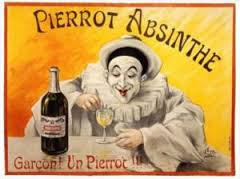
And yet, by these labels, you don't get that idea about the vibrant green drink, do you.
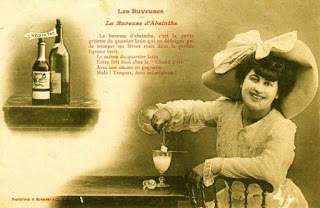
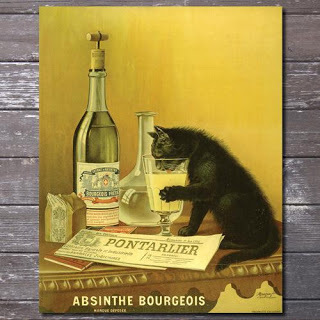
Here is a youtube video of Johnny Depp, in From Hell, drinking Absinthe, using the popular method of sugar cube and flame. It's a wonderful video with vocals by OnlyMandy87 singing Alice Cooper's classic song "Poison". From Hell depicts the time of Jack the Ripper, circa 1889 in London, not Paris. Even so, you can see that Absinthe was a popular drink in not just France at this time, as Oscar Wilde and many other great English writers imbibed in the brew as well. It was a popular drink for those suffering melancholy or trying to forget their pain as well. But hell, I'm just a huge Johnny Depp fan, so hence the video....... enjoy.
Next Time: Those wonderful night clubs in Montmartre and Paris--the Moulin Galette, Moulin Rouge, and more!
Published on June 04, 2015 17:25
June 1, 2015
Release Day for Some Enchanted Dream: The Belle Epoque Adventure
Wonderful news to announce today.
My 10th Romance Novel, and 9th Historical Romance, has just been released.
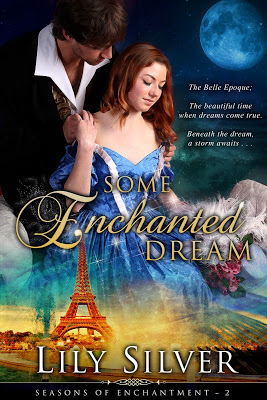
Amazon buy link
iTunes buy link
I'm celebrating, and taking a day off from the writing cave.
What's it all about: It is the Belle Époque; the beautiful time when Western Europe is at peace; Adrian and Tara escaped arrest in Dublin nearly a century earlier through a time jump. They arrive in Paris of 1889 when the world's fair is in full swing. The newly completed Eiffel tower is the centerpiece of this gathering of nations celebrating the pinnacle of human achievement.
The newlyweds take lodgings in Montmartre, a village on the edge of Paris known for artists, absinthe and an avant garde lifestyle. . .
He's from the past : Adrian's privileged existence has crash landed into a sobering reality. He's time-jumped into the future with his lovely bride, only to find his wealth is locked up in a bank account he cannot access because he's legally dead. Adrian struggles to overcome his aristocratic airs and survive without his wealth. As a vigilante in his prior life, will he rise to the occasion on the back streets of Montmartre when Tara challenges him to make a difference?
She's from the Future : As a 21st century woman, Tara is discovering marriage to a man from the past has its difficulties. She's awakening to her fey powers and learning how to use the magic within to survive among mortals. Can she balance her new, empowered existence with her love for a man who believes it is his duty to care for her? When the Green Fairy visits Tara's dreams, she realizes she's been drawn to this time and place for a reason--and it isn't to admire impressionist art.
Beneath the gaiety and celebration in the City of Light, a cruel darkness lurks. Tara and Adrian must blend their strengths to vanquish an ancient evil seeking to enslave mankind.
This book was so much fun to write, and research. I've always been fascinated by this era, with artists haunting Montmartre and creating new, exciting art for the world to enjoy. This is the time of Van Gogh, Toulouse Lautrec, Monet, and other impressionist and post impressionist painters. My minor in Art History helped some, but I still had to research the Paris Exposition of 1889 and the use of Absinthe, and so on. Loved every minute of it, and now its out in the world!
Buy Links:iTunes
Amazon
This story is a sequel to Some Enchanted Waltz, A Time Travel Romance.
In the first book, Tara O'Neill is thrust from our time into Ireland of 1798. She is rescued from British soldiers by a masked man, Captain Midnight. He's also a wealthy Irish Lord, known as Viscount Dillon. He convinces her to marry him for her own protection, and the adventure ensues.
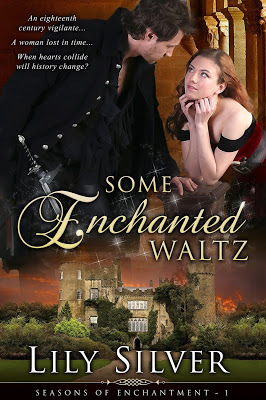
You won't need to read book 1 to be able to enjoy book two, but if you like time travel stories, romance mingled with history, you might like this one as well.
Thanks for your patience in waiting, my deadline got bumped from an April release to May (31) release on Some Enchanted Dream. Hopefully, the wait was worth it. If you are looking for Some Enchanted Waltz, click the picture of the book on the sidebar and it will take you to the Amazon page.
Today, I'm in my gazebo, drinking coffee and enjoying the spring flowers.
Published on June 01, 2015 14:53
May 24, 2015
Paris in the Spring, a Cliche'? Part One--Art
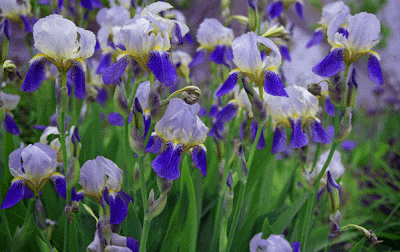 Irises in Spring, Lily Silver copyright 2007
Irises in Spring, Lily Silver copyright 2007"Lilac bushes are in full bloom and the air is heavy with their fragrance. In all the public gardens and squares flowers have been planted and are thriving. The streets are thronged with ladies in beautiful dresses--crowds of persons sitting in front of the cafes and restaurants . . . the boulevards are filled with vehicles (carriages) of every description--yet there is no unpleasant hurrying no pushing. . . " Quote from The American Register Newspaper, circa the late nineteenth century. I love Paris, all things Paris. Big surprise there, who doesn't?
However, I just finished writing a novel where one of the main support characters doesn't. To quote Dan Wilson in Some Enchanted Dream, "I hate Paris in the spring, it's a fucking cliche!" Well, Dan is a modern man so he is forgiven for being a cynic. He's also a sassy character who speaks his mind a bit too frequently. He makes the statement above when he arrives in Paris of 1889, during a blinding rainstorm. By the time he meets Henri Toulouse Lautrec, and goes to the Moulin Galette, however, he's loving Paris in this time period. Its a modern man's paradise. For the past six months I've been researching Paris life in 1889, during the Belle Epoque. Specifically the Montmartre neighborhood, and the Paris expo of 1889. It's been so much fun. I've devoted a couple of Pinterest boards to just the visual aspects of Paris in that era. Lily's Pinterest board, Paris 19th century
Some Enchanted Dream on PinterestWhat is the appeal for me? Or you? Well, there is plenty to get your blood moving if you are familiar with the era. The Artist Movements:
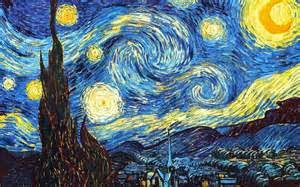 Van Gogh's The Starry Night, compare with image directly below this oneWe've all heard of Vincent Van Gogh, right? The guy who has his images plastered on mugs and tee shirts, whose original paintings sell now for a fortune each. But back in 1889, things weren't looking so good for Vincent. He was a poor painter, had only sold one painting in his lifetime, and people generally thought he was nuts. He was laughed at, scorned, and looked down upon. He was an emotional guy, true, but he was brilliant and no one recognized that face. He lived in obscurity, painting life as he saw it. And his method was part of a new movement called Impressionism that the art world and critics hated. The art curators would not let the Impressionists hang their paintings in the annual salon show for viewing by the public. They considered the works of Manet, Monet, Van Gogh, Gauguin, Henri Toulouse Lautrec, Seurat and others to be too different from the norm of painting realistic almost photographic depictions of historic event. See below:
Van Gogh's The Starry Night, compare with image directly below this oneWe've all heard of Vincent Van Gogh, right? The guy who has his images plastered on mugs and tee shirts, whose original paintings sell now for a fortune each. But back in 1889, things weren't looking so good for Vincent. He was a poor painter, had only sold one painting in his lifetime, and people generally thought he was nuts. He was laughed at, scorned, and looked down upon. He was an emotional guy, true, but he was brilliant and no one recognized that face. He lived in obscurity, painting life as he saw it. And his method was part of a new movement called Impressionism that the art world and critics hated. The art curators would not let the Impressionists hang their paintings in the annual salon show for viewing by the public. They considered the works of Manet, Monet, Van Gogh, Gauguin, Henri Toulouse Lautrec, Seurat and others to be too different from the norm of painting realistic almost photographic depictions of historic event. See below:
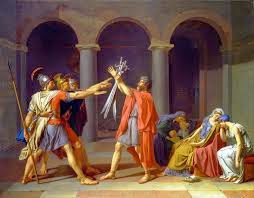 Oath of the Horatii, by David, a traditional painting of eraThe impressionists and post impressionists were painting what they saw in the blink of an eye, and that upset a lot of people. These artists were also delving into subject matter that was taboo, like nudes of women known in French society--recognizable women. They immortalized prostitutes, and Absinthe drinkers, people most of society didn't want to even know about much less be the feature of a modern art show. But, the impressionists and other artists of the time kept painting. When they were refused entry to the established circles of galleries and salons, they set up their own art shows in the parks, allowing the general public to decide for themselves what they liked instead of the gatekeepers who controlled the galleries and what was seen by the public. So this era is very interesting as it brought unimaginable changes to the art world that we take for granted today. Okay, two reasons to love Paris in the Springtime. One, the Spring Salon was a big annual event where vetted art approved by the critics and curators was put on display to the public for a couple of weeks. And second, the unapproved artists also displayed their works in parks and public cafes to get the work out to art lovers when they were banned by the establishment.
Oath of the Horatii, by David, a traditional painting of eraThe impressionists and post impressionists were painting what they saw in the blink of an eye, and that upset a lot of people. These artists were also delving into subject matter that was taboo, like nudes of women known in French society--recognizable women. They immortalized prostitutes, and Absinthe drinkers, people most of society didn't want to even know about much less be the feature of a modern art show. But, the impressionists and other artists of the time kept painting. When they were refused entry to the established circles of galleries and salons, they set up their own art shows in the parks, allowing the general public to decide for themselves what they liked instead of the gatekeepers who controlled the galleries and what was seen by the public. So this era is very interesting as it brought unimaginable changes to the art world that we take for granted today. Okay, two reasons to love Paris in the Springtime. One, the Spring Salon was a big annual event where vetted art approved by the critics and curators was put on display to the public for a couple of weeks. And second, the unapproved artists also displayed their works in parks and public cafes to get the work out to art lovers when they were banned by the establishment.
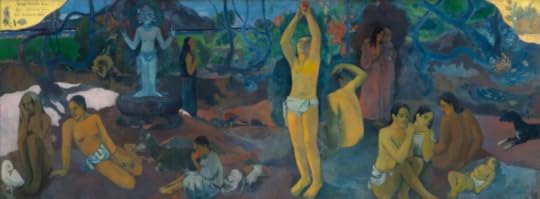 Gauguin's Tahiti period, Note a similar style by later artist Frida KahloThese artists were also interesting characters, having wild affairs, being eccentric, drinking Absinthe to gain inspiration from the muse, living on a dime, and making the conservatives around them cringe with their flamboyant lifestyles. Paul Gauguin, for example, quit his day job as a stock broker and left his wife and children (not cool in any age), to pursue an art career. He went to Tahiti to paint nudes of natives, among other things like landscapes. Abandoning his family is not admirable in any age, but he did become a famous artist, eventually. He's best known for those Tahitian nudes, which are primitive by the standards of the art era he lived in, but sort of revolutionary in style compared to the traditional depictions of previous times.
Gauguin's Tahiti period, Note a similar style by later artist Frida KahloThese artists were also interesting characters, having wild affairs, being eccentric, drinking Absinthe to gain inspiration from the muse, living on a dime, and making the conservatives around them cringe with their flamboyant lifestyles. Paul Gauguin, for example, quit his day job as a stock broker and left his wife and children (not cool in any age), to pursue an art career. He went to Tahiti to paint nudes of natives, among other things like landscapes. Abandoning his family is not admirable in any age, but he did become a famous artist, eventually. He's best known for those Tahitian nudes, which are primitive by the standards of the art era he lived in, but sort of revolutionary in style compared to the traditional depictions of previous times.
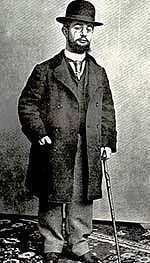 Henri Toulouse Lautrec is also a prominent figure in this area. He was the son of a count, but again chose to go to Montmartre, the artist's district just north of Paris, and become a painter. Toulouse Lautrec was height challenged, a little person in modern lingo. He was also very flamboyant at times. Henri created a cocktail he called an earthquake, a mix of equal parts Absinthe and Cognac. He is famous for his depictions of the night life of the cabarets, including the Moulin Rouge. His style was not at all traditional, either, and he took a lot of flack for it from traditional, conservative art critics at the time. He essentially painted naughty girls--can-can dancers, prostitutes, and gave some of the portraits a gritty edge. He was another brilliant player who influenced art in a big way, opening up the door to true realism in art and not just pretty, painterly realism that had a classic aesthetic. Toulouse Lautrec began doing poster art for businesses, like the Moulin Rouge. Like Van Gogh, he died poor and unrecognized except in a negative way, and was committed to an asylum.
Henri Toulouse Lautrec is also a prominent figure in this area. He was the son of a count, but again chose to go to Montmartre, the artist's district just north of Paris, and become a painter. Toulouse Lautrec was height challenged, a little person in modern lingo. He was also very flamboyant at times. Henri created a cocktail he called an earthquake, a mix of equal parts Absinthe and Cognac. He is famous for his depictions of the night life of the cabarets, including the Moulin Rouge. His style was not at all traditional, either, and he took a lot of flack for it from traditional, conservative art critics at the time. He essentially painted naughty girls--can-can dancers, prostitutes, and gave some of the portraits a gritty edge. He was another brilliant player who influenced art in a big way, opening up the door to true realism in art and not just pretty, painterly realism that had a classic aesthetic. Toulouse Lautrec began doing poster art for businesses, like the Moulin Rouge. Like Van Gogh, he died poor and unrecognized except in a negative way, and was committed to an asylum.
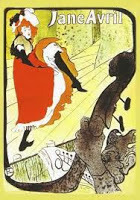 Lautrec's poster artArt was one of the huge draws for me in creating a time travel story set in 1889 Paris, and more specifically, Montmartre, the artist's district. I've studied art history for years and minored it in in college. This era is exciting for art in so many ways, so much changed within a short time as new artists brought new styles and techniques into play. And boy, did they live the life! As Dan Wilson says in my book, the hippies of the Haight-Ashbury era had nothing on these daring souls. The men leaving a comfortable home to live in Montmartre were brilliant in their own right, visionaries in the art world, post humus in many cases. They drank, partied, brawled, hung out in cafes late at night and discussed art together, made love with their subjects at times, haunted the dance halls and created a new age in art by breaking down barriers. Artists coming after them are beholden to them for taking the scorn and rejection and pushing through.
Lautrec's poster artArt was one of the huge draws for me in creating a time travel story set in 1889 Paris, and more specifically, Montmartre, the artist's district. I've studied art history for years and minored it in in college. This era is exciting for art in so many ways, so much changed within a short time as new artists brought new styles and techniques into play. And boy, did they live the life! As Dan Wilson says in my book, the hippies of the Haight-Ashbury era had nothing on these daring souls. The men leaving a comfortable home to live in Montmartre were brilliant in their own right, visionaries in the art world, post humus in many cases. They drank, partied, brawled, hung out in cafes late at night and discussed art together, made love with their subjects at times, haunted the dance halls and created a new age in art by breaking down barriers. Artists coming after them are beholden to them for taking the scorn and rejection and pushing through.
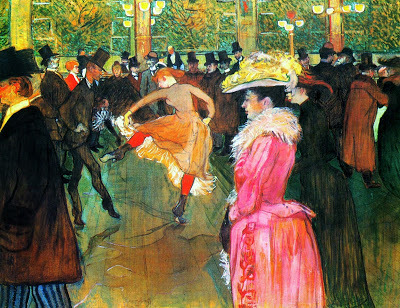 Painting by Toulouse Lautrec My apologies if I've bored you in my enthusiasm for the artists of this time. I started out in this post trying to share many of the elements that went into my newest Time Travel Romance Adventure, Some Enchanted Dream. However, I couldn't put it all in one post. I couldn't limit my love of the artists of this time to one paragraph, as I originally planned. And since I've gone a couple of weeks without a post, this will make up for it, I hope.
Painting by Toulouse Lautrec My apologies if I've bored you in my enthusiasm for the artists of this time. I started out in this post trying to share many of the elements that went into my newest Time Travel Romance Adventure, Some Enchanted Dream. However, I couldn't put it all in one post. I couldn't limit my love of the artists of this time to one paragraph, as I originally planned. And since I've gone a couple of weeks without a post, this will make up for it, I hope. In the next few posts I'll devote time to other elements of the era that beckoned me to write the book, such as the Famous World Expo of 1889 that was held in Paris and used the newly completed Eiffel Tower as a centerpiece, the heavy use of Absinthe in this period, The search for the Green Fairy--the artist's muse, the avant garde lifestyles and of course the popular dance halls like The Moulin Rouge. FYI, there were other nightclubs before it that had just as much excitement going on to draw in patrons--circus acts, card games and beautiful showgirls enticing the men. Think Las Vegas, but without electricity!
Here is an excerpt from my book: Dan is a time traveler from our time, and is meeting local artists at a cafe in May 1889 to share Absinthe, dinner and some interesting conversation:
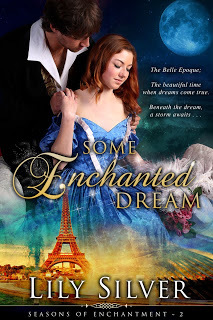 Release date 5/30/15Excerpt of Some Enchanted Dream, COPYRIGHT LILY SILVER, 2015
Release date 5/30/15Excerpt of Some Enchanted Dream, COPYRIGHT LILY SILVER, 2015"This was Paris, in the time of Le Heure Verte. Dan was enchanted by the phrase. The Parisians actually had a name for the time of day when everyone indulged in a glass of green liquor. L'heure Verte. The Green Hour. He was sitting at an outdoor table on the terrace of the Cafe Veron on Blvd Montmartre, sipping absinthe with two men he had met in the tobacco shop that afternoon. Never one for art, Dan couldn't name the famous fellow who had painted an outdoor cafe scene at night, he only remembered the guy had flaming red hair and was supposed to have cut off his ear and gifted it to some poor lady he admired. Mad fellow, that, but his paintings from this time were worth millions in the future. I'll ask Tara about the fellow, surely she'll know his name, Dan thought. Wouldn't it be a hoot if they could meet that famous painter? He was mimicking his companions, taking small sips of the bittersweet drink of pale, opalescent green that had an hour of the day named after it. L'heure Verte. He tasted licorice, lemon balm and some other delicate flavoring that tickled his senses. "Where are you from, good fellow?" Dan's companion asked politely. Arthur Bellows was the man who had directed them to their present lodgings the other day. Bellows hailed from England. He was spending a year in Paris, trying to establish himself as an artist. "America," Dan answered, rolling his lips and letting his tongue dart about them to garner another taste of the unusual drink. "I was visiting my daughter and her husband in Dublin. They decided to come to Paris on a whim. It seemed a pleasant diversion."
"I salute their effort at spontaneity," Mr. Paul Gouffe' said with bold authority. "Didn't they realize every room in Paris would be let for the Exposition?" The man had a nose that seemed more broken than hooked. His face was grave, his hair black and his beard bushy and full where his comrade, Mr. Bellows had a countenance that was smooth-shaven and his manner was quiet and cultured. "The world has come to bow at our feet. We are the city of light." An odd pair, these two, but friendly toward a stranger, Dan conceded.
"Paul, don't be so hard on the fellow," Arthur argued. "Here's to you and your daughter, Sir. May your dreams become manifest in our fair city of light." Arthur raised his small glass toward the tower glowing in the distance, the Eiffel Tower, and they drank to his toast. "It is the time for dreams, no?" Paul, the burly fellow, gestured about. "Take me? I've left my stuffy life as a bank clerk to become a painter. We must all embrace our dreams, oui?" "Ah, yes. And if only you could find patrons for your primitive nudes," Arthur laughed, and slapped the brute fellow on the shoulder. "Then you'd stop complaining about not having two sous to rub together in this glorious city of light." Paul's face, coarse and unpleasant as it was, grew red, signaling trouble. He stood up, and tossed his empty glass to the curb. The noise of it shattering made the men at the tables around them turn to look. "M'sieur Bellows, you insult me with your jest in front of our guest!"
 "Paul, sit. I meant no insult to you and you know it. You tell everyone here night after night how you cannot sell your glorious paintings to the salon, how you need to find patrons to fund your next trip around the world, so why the pretended offense if I tell the same story to a visitor in our midst?" Arthur argued. Murmurs about them, mostly in French, gave Dan the uneasy feeling a fight was about to ensue between the gruff Mr. Gouffe' and his more temperate English friend. A long string of French exploded from Paul's ruddy lips like a wind storm. He glared at Arthur. Arthur stood up, appearing to take issue with the Frenchman's hot words. "Gentleman," Dan rose and extended a hand toward each of them. "Do not ruin my first evening out in Paris with a brawl. I should like to hear more about your paintings, Paul." "Not tonight," the Frenchman hissed, and lumbered away from the open cafe. "He is a hot headed chap," Arthur explained as they took their seats again. "Doesn't take much to set him off. He'll be off to visit one of his whores to soothe his ego." Dan nodded, but didn't comment. The fellow had been so jovial earlier that afternoon when they met in the tobacco shop. He was sullen and ill tempered this evening. "So, he paints nudes, does he?" "This is Paris. We all paint nudes. To the beauty of the female form." Arthur lifted his glass once again in a toast. Dan couldn't contain his grin. This place was turning into paradise. "Here, here." A waiter came out bearing a tray of cooked meat, and a woman followed with plates and forks. Dan swallowed hard, realizing he'd not eaten since before noon and it was now past six in the evening. He patted his pockets. "How much? I'll toss in half." "No." Arthur held up a thin hand with long fingers. "You are my guest tonight, Mr. Wilson. And my father, the ill humored Earl of Leicester, is the benefactor for our feast. Eat, friend. Eat. Drink. Celebrate. This is Paris, after all. And we are her suitors from afar, come to court Le belle dame sans merci, The beautiful woman without mercy." The scent of roasted fowl was curling about Dan's nose with exotic tendrils of seduction. He could not argue with his companion. Hopefully, he'd be able to return the favor and buy Arthur a few pints later this evening. "Are you a poet as well as an artist?" Arthur sliced a piece of breast meat from the sultry brown carcass between them. He offered it to Dan by reaching across the table and placing it on his plate. There were steaming potatoes, and green beans. Dan smiled with wicked delight. If Paul hadn't become so foul tempered, he'd be eating with them now. Well, then, all the more for himself and Artie. "I do write verse from time to time, but that quote is not my own. It comes from Keats, written long ago. Do you not know your English Poets, my good man? "'I met a lady in the meads, Full beautiful--a fairy's child, her hair was long, her foot was light, and her eyes were wild'. To Keats, the beautiful woman without mercy is actually a fairy maid." Dan choked on the mouthful of roasted duck he was trying to swallow. Fairy. He'd been slapped upside the head recently over that odd business. And wasn't that what got him into this wild mess of time travel in the first place? Fairy magic. Tara's fairy magic, to be precise. COPYRIGHT LILY SILVER, 2015
"Paul, sit. I meant no insult to you and you know it. You tell everyone here night after night how you cannot sell your glorious paintings to the salon, how you need to find patrons to fund your next trip around the world, so why the pretended offense if I tell the same story to a visitor in our midst?" Arthur argued. Murmurs about them, mostly in French, gave Dan the uneasy feeling a fight was about to ensue between the gruff Mr. Gouffe' and his more temperate English friend. A long string of French exploded from Paul's ruddy lips like a wind storm. He glared at Arthur. Arthur stood up, appearing to take issue with the Frenchman's hot words. "Gentleman," Dan rose and extended a hand toward each of them. "Do not ruin my first evening out in Paris with a brawl. I should like to hear more about your paintings, Paul." "Not tonight," the Frenchman hissed, and lumbered away from the open cafe. "He is a hot headed chap," Arthur explained as they took their seats again. "Doesn't take much to set him off. He'll be off to visit one of his whores to soothe his ego." Dan nodded, but didn't comment. The fellow had been so jovial earlier that afternoon when they met in the tobacco shop. He was sullen and ill tempered this evening. "So, he paints nudes, does he?" "This is Paris. We all paint nudes. To the beauty of the female form." Arthur lifted his glass once again in a toast. Dan couldn't contain his grin. This place was turning into paradise. "Here, here." A waiter came out bearing a tray of cooked meat, and a woman followed with plates and forks. Dan swallowed hard, realizing he'd not eaten since before noon and it was now past six in the evening. He patted his pockets. "How much? I'll toss in half." "No." Arthur held up a thin hand with long fingers. "You are my guest tonight, Mr. Wilson. And my father, the ill humored Earl of Leicester, is the benefactor for our feast. Eat, friend. Eat. Drink. Celebrate. This is Paris, after all. And we are her suitors from afar, come to court Le belle dame sans merci, The beautiful woman without mercy." The scent of roasted fowl was curling about Dan's nose with exotic tendrils of seduction. He could not argue with his companion. Hopefully, he'd be able to return the favor and buy Arthur a few pints later this evening. "Are you a poet as well as an artist?" Arthur sliced a piece of breast meat from the sultry brown carcass between them. He offered it to Dan by reaching across the table and placing it on his plate. There were steaming potatoes, and green beans. Dan smiled with wicked delight. If Paul hadn't become so foul tempered, he'd be eating with them now. Well, then, all the more for himself and Artie. "I do write verse from time to time, but that quote is not my own. It comes from Keats, written long ago. Do you not know your English Poets, my good man? "'I met a lady in the meads, Full beautiful--a fairy's child, her hair was long, her foot was light, and her eyes were wild'. To Keats, the beautiful woman without mercy is actually a fairy maid." Dan choked on the mouthful of roasted duck he was trying to swallow. Fairy. He'd been slapped upside the head recently over that odd business. And wasn't that what got him into this wild mess of time travel in the first place? Fairy magic. Tara's fairy magic, to be precise. COPYRIGHT LILY SILVER, 2015NEXT TIME: Absinthe, that lovely green drink that inspires men to dream, to write, to paint, to create!
Published on May 24, 2015 15:47
May 4, 2015
Jane Austen: Why We Love Elizabeth Bennet!
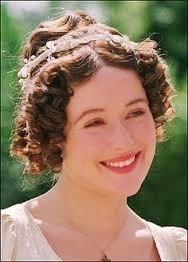 Jennifer Ehle as Lizzie Bennet
Jennifer Ehle as Lizzie BennetIf you are a Jane Austen fan, as I am, your favorite heroine might be Elizabeth Bennet in Pride and Prejudice. There are many other wonderful heroines in her stories, but Pride and Prejudice seems to be the perennial favorite.
If you don't know the story: here it is in a nutshell. Elizabeth Bennett is about twenty, still lives at home with her mom, dad, and four sisters. Their dad has a nice home, Longbourne, with servants. There's a little problem with their future, however, as daddy's home is entailed, meaning he cannot leave it legally to anyone but the nearest male relative. No sons. So mom worries all the time about what should happen if Mr. Bennett dies. She fears they will all be tossed out onto the street, penniless, when Mr. B's nephew obtains the property.
So, mom has five unmarried daughters, and her plan is to marry them off to rich men of means, so they will all be ensured a prosperous future. Well, it is the early 19th century here, so that was normal. Women couldn't go to college. They couldn't to out and get jobs, unless they were low born. Then they could be servants, tavern maids, or governesses.
Elizabeth is the second daughter. Her older sister, Jane, is said to be a startling beauty. Lizzy is the brainy one of the family, and her father's favorite. Jane is serene and quiet, like a beautiful swan gliding over a peaceful pond. The other three sisters are annoying and shallow--just like mom. The youngest, Lydia, who is fifteen, is the worst of the bunch, being spoiled as the baby and clearly mom's favorite.
So, when Elizabeth Bennet, a very feisty, smart woman who loves books, like her father, meets a certain man who is haughty and condescending, she immediately takes him in dislike. Worse for it, he actually insults her to his friend at a ball, (with her overhearing his nasty remarks), which adds fuel to her dislike.
Getting back to the storyline of the house falling into the nephew's hands: Mr. Bennet's nephew, Mr. Collins, comes to visit. He's a clergyman, and really rather . . . unattractive and simple minded.
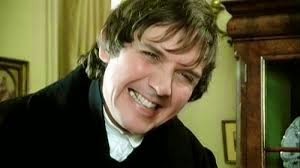 Mr. Collins
Mr. CollinsHe comes with the intent of asking one of his cousins to marry him, thereby keeping the house in the family when he inherits it after Mr. Bennet's death ...and as an olive branch as his father and Mr. Bennet were estranged as brothers.
Unfortunately, he fixes his fancy on Elizabeth. Her mother tries to bully her into accepting, but Elizabeth refuses to given in.
Lizzie's father comes to her rescue, as he says "I'm afraid you are faced with a terrible dilemma, Lizzie. You mother has vowed to never speak to you again if you do not marry Mr. Collins, and I will never speak to you if you do [marry him]."
You can see where Lizzie gets her wit from. But this incident shows us Lizzie is not going to be bullied into marriage (a common occurrence in Regency novels and times) by her mother or anybody else. She's determined not to attach herself to an idiot for life, and her intellectual father upholds her decision.
What is so different about Elizabeth Bennet over the many regency era heroines we love to read?
Elizabeth is not looking for a man! Yeah, she's not really into the marriage gig. Oh, she's not opposed to it to the point of being militant about it. She just quietly goes her own way and lets all the men buzz around her beautiful older sister, Jane.She loves her goofy, embarrassing mom, and her reclusive dad. Lizzie endures, as many young people do still trapped at home with parents. She endures their flaws without drama. She's learned to just put up with their flaws. She loves her sisters, especially Jane, who she has a special bond with as they are the two eldest. Elizabeth does what she can to promote Jane with Mr. Bingley, where in this competitive society of must marry fast and well, a girl might consider her sister competition for a wealthy man's attentions.
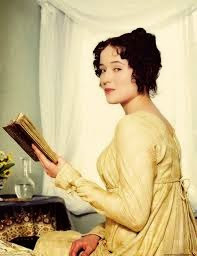
She doesn't mind if other women make fun of her for loving to read. She says as much to Miss Bingley, the shallow, snarky woman who is jealous of her because Darcy likes Elizabeth. Our Heroine takes the vixen's venom in mixed company in stride and ignores the woman's callow remarks, decidedly lessening the barbs by not being baited. She just keeps reading her novel serenely. She speaks up for herself without apology, and gives her opinions. Elizabeth is a gentlewoman, raised to adhere to the strict manners of society, yet she is self confident and uses her wit to good advantage to make fun of some people's expectations about society's traditions. Here is a perfect example of Elizabeth Bennet's (LB) spunk and self confidence:
The following scene takes place Lady Catherine's home, at her dinner table with other guests literally quaking in their shoes in the presence of her ladyship, and not willing to speak hardly at all. Lady Catherine (LC)takes to quizzing Elizabeth on her family. Note how Elizabeth stands her ground on her opinions and doesn't resort to quivering or groveling:
LC: "Are any of your younger sisters out?"
EB: "Yes, ma'am, all of them."
LC: "All!--What, all five at once? Very Odd ......the younger ones out before the elder is married?"
EB: Yes, my youngest is not sixteen. Perhaps she is full young to be out much in company. But really, ma'am, I think it would be very hard upon younger sisters, that they should not have their share of society and amusement because the elder sister may not have the means or inclination to marry early. The last born has as good a right to the pleasures of youth, as the first. And to be held back with such a motive!--I think it would not be very likely to promote sisterly affection or delicacy of mind."
LC: "Upon my word! You give your opinion very decidedly for so young a person. Pray, what is your age?"
EB: "With three younger sisters grown up," replied Elizabeth with a smile, "your ladyship can hardly expect me to own it."
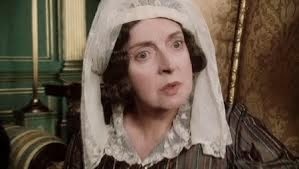
The Response: in Jane Austen's words 'Lady Catherine seemed quite astonished at not receiving a direct answer; and Elizabeth suspected herself to be the first creature who had ever dared to trifle with so much a dignified person.'
You will find many such witty parries in conversation throughout the book. Elizabeth, her father, and other characters play mental chess with less intelligent people, [like her drama queen mom and her silly sisters!] and they do it with a smile and with charm their targets hardly even realize they've been made fun of. It's brilliant writing, akin to Shakespeare but without the tedious 'thees', thous' and 'doth's.
After Mr. Darcy's rude and condescending proposal of marriage to Elizabeth, in which he says that he loves her against his will and good judgement and has fought against his feelings for her as [according to him] she is so much lower then his family in society:
"You are mistaken, Mr. Darcy, if you suppose that the mode of your declaration affected me in any other way, than as it spared me the concern which I might have felt in refusing you, had you behaved in a more gentleman-like manner."
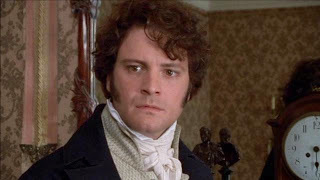 Say What, you don't want to marry my wealthy, arrogant @$$? She could have just said 'No, I don't want to marry you.' Instead Elizabeth had the chops to point out to her arrogant suitor that his behavior was insulting, and therefore relieved her of the burden of feeling bad for refusing his offer.
Say What, you don't want to marry my wealthy, arrogant @$$? She could have just said 'No, I don't want to marry you.' Instead Elizabeth had the chops to point out to her arrogant suitor that his behavior was insulting, and therefore relieved her of the burden of feeling bad for refusing his offer. 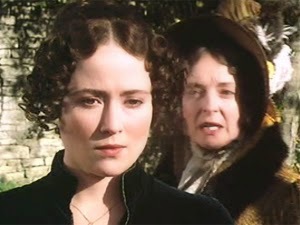
"In marrying your nephew, I should not consider myself as quitting that sphere. He is a gentleman; I am a gentleman's daughter; so far we are equal."
Said to the haughty Lady Catherine de Bourgh when the elder woman was putting Lizzie down for her social standing and insisting Elizabeth was not suitable to marry the super wealthy Mr. Darcy. Instead, Lady Catherine's attack made Elizabeth all that more determined to marry Mr. Darcy.
This story is full of family drama, romance, and wit. Jane Austen makes our heroine self-confident, lovable and enduring. Elizabeth has the grace and aplomb to stand her ground and yet to do so without being vicious or melodramatic. She remains strong and cool headed when faced with a family crisis--the youngest sister runs off with Mr. Wickham (the girl is hardly sixteen). While her mother wallows in self pity, feigns fainting spells and takes to her room wailing inconsolably, Elizabeth keeps her head and tries to help her father figure out a solution.
Elizabeth is a sensible, intelligent heroine in this regency romance. And the really cool thing is that Jane Austen, the author, actually lived in that era, so it's a contemporary look at Regency and late eighteenth century life. If you are an author, you'll find hidden gems about life in this era, manners and so forth, and it's a great read!
Note: I used photos from the 1995 BBC film version of Pride & Prejudice for illustration purposes. This version is my favorite as it is pretty much word for word from the book (a rare thing in this era!). There are several film versions available but the best part is reading the book. You'll be highly entertained by our witty heroine as she navigates regency society and the uncertain waters of romance.
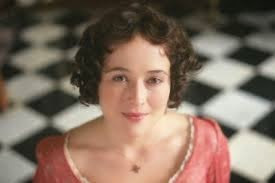
Elizabeth, you'll live on in our hearts for generations to come!
Published on May 04, 2015 14:33
March 28, 2015
Jane Eyre: A Modern Author Takes the Romance Element Deeper!
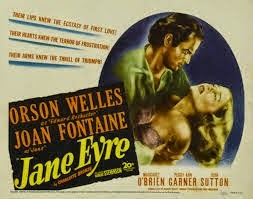
If you've been following this blog in the past few months, you know I've been doing a series of articles on Jane Eyre. I've explored the story-line, the main characters of Rochester and Jane.
Mr. Rochester's Dark Moods
Jane, a heroine we admire
And I've explored the many, many movie adaptions of this great novel. I've even shared a recent find by a modern author, Anna Erishkigal, who wrote The Auction, and told you how I loved the modernized story set in the present. If you've missed that story, here's a link to it on Amazon, btw The Auction by Anna Erishkigal
So, since we've covered the pluckiness of Jane, the brood factor of Mr. Rochester, the scary events and Thornfield Hall, and the pathetic marriage proposal from Sinjun, I have one more thing to share before moving on to another couple worthy of Timeless Lovers discussions.
This week, as promised long before my surgery on March 5th, 2015, I'm sharing another great MUST read that I feel will delight my fellow Jane Eyre fans.
This time, it's a historical romance novel, a Gothic novel written by a very talented romance writer of our time, Eve Silver (No Relation!)
 Babs Bunny, no relation to Bugs Bunny!
Babs Bunny, no relation to Bugs Bunny! Eve Silver's story, His Dark Kiss, is part of a Gothic Romance series named Dark Gothic . It is book two in the series. Book one: Dark Desires Book Two: His Dark KissBook Three: Dark PrinceBook Four: His Wicked SinsAlthough I've only read the first two novels, I have the third on my kindle and am waiting to savor it. Her books are wonderful if you are a huge Gothic romance reader, as I am.
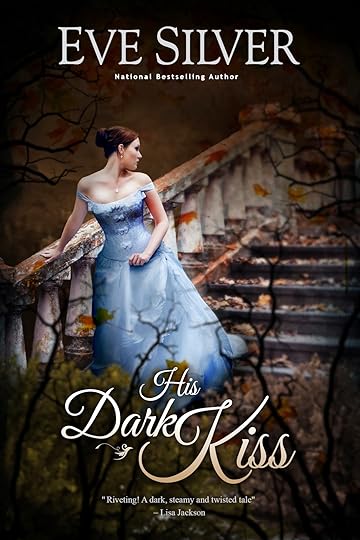
His Dark Kiss: It's about a girl, Emma, who is living with her not so nice aunts. This is a period drama, like Jane Eyre. Emma is illegitimate, and despised by the aunts. In this time period, children born in such circumstances were treat badly by most, often hated, reviled, and sometimes abused merely for being born to an unwed mother. I know, it seems weird in our time, but we're talking 19th century morals here.
The aunts wish to be rid of her, as well. They've set upon a scheme to sell her off as a mistress to some man. Wicked Aunties, to be sure! Doesn't that just make you burn with anger on Emma's behalf.
Emma would like nothing more than to get away from her aunts, but what can a girl with no money and no familial connects that would willingly help her do? She's a dependent relation to them. Emma is offered a position at her cousin's husband's home to act as governess to her cousin's son. It seems the perfect arrangement for her.
She travels to the manor house, of course a very Gothic type mansion full of dark secrets and set in a remote region, and meets her employer, Lord Craven, a widower (husband to the deceased cousin). This guy is handsome, sexy and Emma is instantly attracted to him on a primitive level. He's also more than a bit scary. Like Rochester, he broods a lot, and is not always pleasant to those around him. He also has some dark secrets that worry Emma.
The manor is sort of crumbling. And, there are whispers of murders, and mysterious accidents occurring with other governesses. There have been a few governesses before her, so she's entered into a very dangerous position, not a pleasant one as she'd hoped. But, she preservers as a good Jane Eyre role model would. Emma has no where else to go, really, but back to her nasty aunts. She falls in love with her little charge, six year old Nicky, and is developing some pretty scary (as in deep) feelings for her employer, her cousin's widower. I don't want to give away spoilers, so I won't tell you every nuance of the plot. If you're curious, read the book, you'll not regret it.
It is a romance, make no mistake. And, as a romance, the main action is between the Hero and Heroine, and yes, there will be a lot more stolen kisses and sensuality, even a love (Sex) scene, so if you are expecting a chaste rendition of the Classic, you need to know this upfront before you buy it. This story is NOT--NOT-NOT erotica, by any means, it is historical romance with a sensual edge. I don't wish anyone to be misled. The prior book I mentioned, The Auction by Anna Erishkigal, is a sweet contemporary romance mirroring the Jane Eyre love story.
His Dark Kiss is a creepy, keep you up at night story, and it is close to Jane Eyre. Not line for line, but the imagination of the Ms. EVE Silver has taken the romance trope of governess and brooding male employer to a new level as she's added a much darker and sinister tone in her work. Love it. You will, too, if you love Gothic Romance. Below are other books in the series. They are standalone reads, as the events of any one book to not influence your enjoyment of the other books. I'm passing along the series as well as the Jane Eyre-esque read to you so that if you like dark romance, you'll have a new lead. Gothic romance stories are a rare find these days, so check these out if you dare!
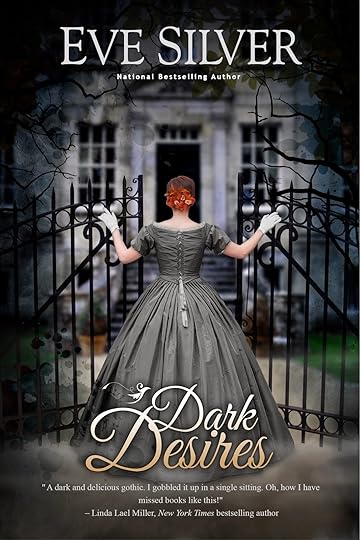 Book One
Book One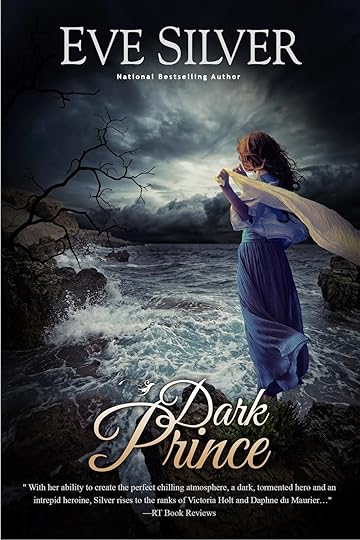 Book Three
Book ThreeHAPPY READING!
Published on March 28, 2015 12:41



